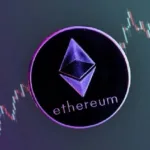Financial market analyst Alexander Velasquez believes that XRP has high potential due to its ability to move funds quickly and cost-effectively on a global scale. For this reason, he says he prefers the asset over Bitcoin (BTC) and Ethereum’s native cryptocurrency, Ether (ETH).
now, Is this advantage enough to invest all of your funds in XRP? Before answering this question, it’s important to clarify a few questions.
Velasquez himself revealed in his latest report that he invested all of his capital in cryptocurrencies issued by Ripple Institute. “Well, I have a confession to make. I recently started investing, but I wasn’t investing in any of the companies I analyzed before. In fact, I currently have my entire portfolio invested in one thing: XRP,” he admits.
Additionally, he “strongly” recommends purchasing XRP. “Because Ripple has developed an unparalleled infrastructure in SWIFT, a high-speed, low-cost network that already moves around $5 trillion annually with participation from major banks and central banks.”
However, based on what has been said here, his position is somewhat questionable. It is the fact that from his role as a financial analyst, he declares that he invests all his capital in a single risky asset. Questions may arise about its objectivity.
To put his recommendations in context and clarify potential conflicts of interest, Mr. Velazquez clarifies: “If you follow me or have read my past articles, you know that no matter how optimistic my position may be, all of my analysis focuses on companies that I am not a part of.”
What is not clear is that Portfolio remains the basic rule of risk management. And even more so when it comes to volatile assets like cryptocurrencies.
John Murillo, Business Director at B2BROKER, was consulted by CriptoNoticias on this matter and said, “I can say that it is never wise to invest all your capital in a single asset, whatever it is. “There is concentration risk that is amplified by constant volatility, liquidity cycles and regulatory uncertainty. In fact, even a single small event, from a court ruling to an exchange delisting, can wipe out months of gains.”
With these clarifications made, it is time to consider why Velasquez chose XRP over Bitcoin or Ether.
XRP ledger network speed
Velasquez highlighted that Ripple is expanding the use of XRP through its on-demand liquidity (ODL) service, which enables near-instantaneous international payments while reducing costs.
In the second quarter of 2025, ODL Processed $1.3 trillion in transactionsbenefiting banks such as Santander and partners such as SBI Remit and Tranglo.
Additionally, Ripple is collaborating with central banks in digital currency pilot projects such as Bhutan and Palau. This strengthens the potential of XRP as an infrastructure for future CBDCs. Market likely to exceed $1.5 trillion by 2030. Mr. Velasquez also said:
I believe that BTC is the best asset as a store of value and one of the main attractions of being considered “digital gold”, but its transaction speed is too slow. Verification takes 10 minutes and can only process up to 7 transactions per second (TPS). This also makes scaling difficult. XRP, on the other hand, supports 1,500 TPS under standard conditions, making it more than 214 times faster than Bitcoin, and fees are less than 1 cent compared to Bitcoin, ranging from $1 to $10, and can even be higher at peak times.
Alexander Velasquez, Financial Markets Analyst.
But is this enough to choose Bitcoin over Bitcoin? Velasquez focuses on transaction speed as the main argument in favor of XRP over BTC. but, The technical differences do not necessarily make Ripple Labs’ cryptocurrency a better investment.
Speed and low transaction costs are operational advantages, but do not guarantee long-term value.
Bitcoin was designed to be a more secure decentralized network, prioritizing immutability over speed. In addition, solutions such as the Lightning Network have increased scalability, making it possible to process thousands of transactions per second off the main chain.
Perhaps speed could be a functional advantage, but But from an adoption, value, and safety perspective, the debate still remains.
On the other hand, it is necessary to explain why Mr. Velasquez speaks of BTC as “digital gold.” This is because digital assets share similarities with precious metals, such as decentralization and resistance to censorship.
Its supply is limited to 21 million pieces and decreases every four years to coincide with its halving, making it even more rare. These characteristics make it a kind of “digital gold” and valued as a haven from inflation and expansionary monetary policy.
Another issue that must be highlighted is that BTC tends to rise over timeas seen in the following graph.
Meanwhile, XRP had to wait almost seven years to surpass its all-time high of $3.31 again.
XRP and its promise as the “cryptocurrency of banks”
Velasquez predicts that in the long term, XRP could range between $10.97 and $66.67. This means a growth potential of 350% to 2,631% compared to the current value.
These estimates are based on the likelihood that XRP will capture a portion of SWIFT’s settlement volume. It’s a slow and expensive, but global international money transfer system that moves $150 billion a year.
Brad Garlinghouse, CEO of Ripple Labs, It is estimated that cryptocurrencies could control up to 14% of that flow by 2030equivalent to $21 billion annually.
However, XRP has not yet established itself as a “banking cryptocurrency.” Another issue to keep in mind is that its use in RippleNet is optional, which limits its central role. In other words, Analysts base their forecasts on Garlinghouse estimates.it remains to be seen whether that will come to fruition.
Another alternative being considered is the possible integration of XRP and SWIFT. but, It’s just a rumor for now and there is no official confirmation.
Note that while the authors present these estimates as arguments in favor of XRP, they do not do the same for Ethereum. Speaking about the network co-created by Vitalik Buterin, he says: “Its main strength lies in its smart contracts and ability to host applications on its network, such as Uniswap, and wallets such as MetaMask and Trust Wallet.”
In that sense, it points out that “With TPS of 16.91 and gas fees in the range of less than $0.50, it is not realistic to use it for large payments, and the fee cost could double in minutes due to congestion.”
That is, ignoring other benefits of networking, including leadership in stablecoins and tokenized real-world assets (RWA). One of the market trends.
British multinational bank Standard Chartered predicts that the market capitalization of the RWA industry could reach $2 trillion (Trillion It is expected to be achieved by 2028, according to a report by CriptoNoticias.
“Ethereum has been running for over 10 years without any disruption to its mainnet. In our view, the fact that other chains are faster or cheaper is irrelevant,” said Jeffrey Kendrick, head of digital asset research at Standard Chartered.
at the moment, RWA inhabiting Ethereum exceeds $11.82 billion, As seen in the following graph:
Ethereum has the potential to capture a significant portion of this RWA market. This will lead to more activity within the network and a sustained demand for ETH for fee payments.
Unlike XRP, whose price estimation is highly dependent on future adoption, Ethereum uses its ecosystem continuously and persistently. This is a factor that clearly increases the value and usefulness of the national currency.








